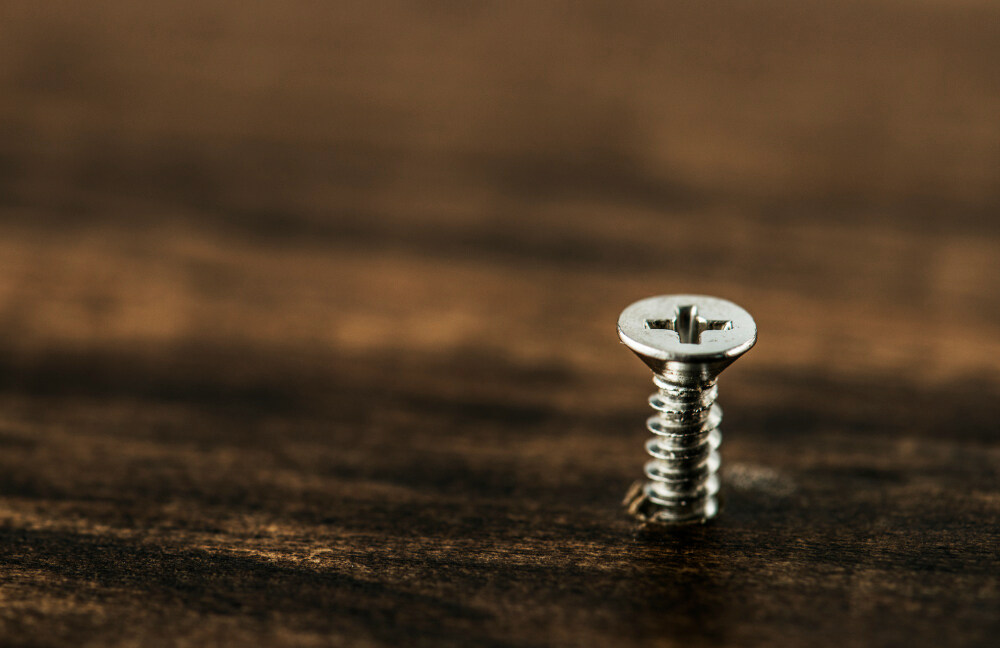Installing drywall (or Sheetrock) correctly is both an art and a science. One of the most critical aspects is the drywall screw spacing – how far apart screws should be placed on a panel. Proper spacing ensures strong, flat walls and ceilings that won’t sag or crack. In this guide, we explain standard spacing rules (for both walls and ceilings), practical tips, and why it matters. We’ll also cover sheetrock screw spacing (Sheetrock is a USG drywall brand) and best practices for “screws in drywall” spacing.
Drywall panels are secured to studs or joists using special drywall screws. If screws are too far apart, panels can flex or sag; if they’re too close, the paper may crumble. The International Residential Code (IRC) and drywall manufacturers agree on general guidelines: typically about 16 inches apart in the field (center) of a wall panel and about 8 inches at the edges. Ceilings need even tighter spacing: about 12 inches in the field and 7–8 inches on edges. Always verify with local building codes (which may vary) before starting.
Drywall Screw Spacing at a Glance
| Location | Edge Screw Spacing | Field Screw Spacing |
| Wall Panels | ~8 inches | ~16 inches |
| Ceiling Panels | 7–8 inches | 12 inches |
Table: Typical screw spacing for 1/2″ drywall (Sheetrock) panels. Exact spacing may vary by local code.
Why Proper Drywall Screw Spacing Matters
Correct screws in drywall spacing is vital for both strength and finish quality. First, proper screw density keeps the drywall firmly attached to framing so it won’t bow or crack under weight or humidity changes. If screws are spaced more than recommended, panels can flex; if they’re placed too close, the gypsum surface may be damaged.
Second, even spacing helps with finishing. Well-spaced screws allow joint tape and compound to lie flat; unevenly spaced screws can create high or low spots that are difficult to smooth.
Most pros use 16″ on center for field screws (the interior) and 8″ on center for edge screws. A rule-of-thumb is about one screw per square foot of drywall (roughly 32 screws for a 4×8 sheet). This roughly matches 8″/16″ spacing and simplifies ordering supplies.
Standard Screw Spacing for Walls
For vertical walls, the edge and field spacing differ: screws go closer together along the panel edges (where sheets meet and need extra support) and farther apart in the middle. Here are the typical guidelines:
- Wall Panel Edges: Space screws about 8 inches apart along each edge of a drywall sheet. Closer spacing here prevents uneven joints.
- Wall Panel Field: In the central area of the sheet, space screws about 16 inches apart. This is the maximum recommended spacing for ½″ drywall. It generally aligns with standard stud spacing (16″ studs) in modern homes.
Screw patterns should run in straight, evenly spaced lines that hit each stud or joist. On walls, many pros keep screws on adjacent panels staggered at shared studs to avoid two panel edges meeting on one stud (which could create a weak spot). Other installers align field screws in columns, which some believe adds rigidity. Either way, keep the pattern consistent.
Quick Tips (Walls): Use fine-thread drywall screws for wood studs and coarse-thread for metal studs. Drive each screw so its head is just below (but doesn’t break) the drywall paper. Avoid overdriving screws (which weakens the hold) or under-driving them (which leaves bumps).
Screw Spacing for Ceilings
Ceiling drywall bears the weight of the sheet against gravity, so it needs tighter spacing than walls. The basic rule: 7–8 inches on edges, 12 inches in the field.
- Ceiling Panel Edges: Install screws about 7–8 inches apart along the edges.
- Ceiling Panel Field: Place field screws at about 12 inches apart (or closer if you prefer extra security).
Because ceilings can be 4×8 sheets hung perpendicular to framing, make sure every ceiling panel edge and field screw hits a joist. Like walls, keep screws flush (just dimpled). Some installers also use a bit of construction adhesive on joists for added support when hanging ceilings, though this is optional.
Best Practices for Drywall Screw Patterns
- Align with Studs/Joists: Make sure every screw goes into framing. Mark stud locations first.
- Stagger Adjacent Sheets: On adjoining panels that share a stud, some pros stagger edge screws to reduce splits. Others align them. Either way, be consistent.
- Correct Depth: Drive each screw until the head just breaks the paper surface.
- Avoid Over-Driving: Don’t drive screws too deep or they’ll weaken the hold.
- Check Local Codes: Most building codes specify maximum spacing (16″ on walls, 12″ on ceilings). Some require closer spacing on fire-rated or exterior walls.
- Use Proper Screws: Use coarse-thread Type W screws for wood studs, fine-thread for metal studs. For ½″ drywall, typical screw length is 1¼″.
Common FAQs About Drywall Screw Spacing
What is the standard drywall screw spacing?
For ½″ drywall on walls, use about 8 inches apart on edges and 16 inches in the field. For ceilings, use 7–8 inches on edges, 12 inches in the field.
How many screws do I need per 4×8 drywall panel?
Roughly 32 screws per standard 4×8 sheet (1/2″ thick) is typical.
Is Sheetrock screw spacing different from drywall?
No. Sheetrock is just a brand of drywall. The spacing rules are the same as any gypsum wallboard.
What happens if the screws are too far apart?
If screws are spaced too widely, drywall can sag or flex between fasteners, especially on ceilings. This may lead to cracks or panel detachment over time.
Conclusion
Proper drywall screw spacing is a small detail that makes a big difference. By following industry standards – roughly 8″ on panel edges and 16″ in the field for walls (slightly tighter for ceilings)—you’ll ensure panels are held securely. This not only meets building codes but yields flat walls with minimal tape and mud headaches. Always use the right screw type/length, drive screws to the correct depth, and double-check local code requirements.
With correct sheetrock screw spacing and good technique, even a DIYer can achieve professional-quality results and avoid common pitfalls.
Would you also like me to shorten the FAQs to just 3 questions (for a tighter word count), or keep them as-is for more SEO coverage?

